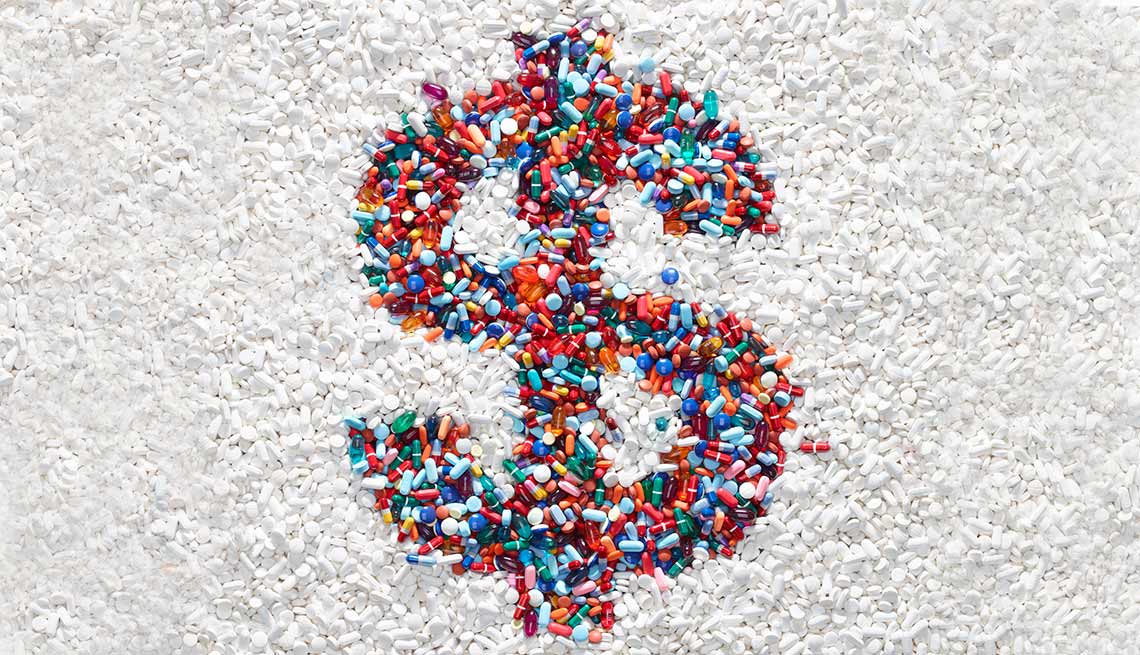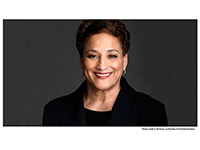Fighting Against High Drug Costs
Trend could mean poorer health and higher health care expenses
En español | Heather Block was managing aid projects for the State Department and the United Nations in Afghanistan when she found a lump in her breast. Following a mastectomy and chemotherapy, she was on the road to recovery. Then, a year after her oncologist pronounced her cured, the cancer returned, this time to her liver. After she underwent a brutal liver resection to remove the cancer, doctors discovered that it had spread to her lungs.
Stage 4 cancer with no cure — her oncologist told her that half of women survive two years and only 20 percent last five years. Four and a half years later, Heather — now 53 and living in Lewes, Del. — appears to be beating the odds, surviving on costly drugs.
Medicare pays approximately $2,000 for her monthly prescription drug treatment. But because it is billed through Medicare Part B, which does not have an out-of-pocket maximum, she is responsible for 20 percent of the cost of every cancer drug she takes, more than $400 a month — and the costs keep rising at alarming rates.
Like Heather, millions of Americans struggle with the high cost of prescription drugs. AARP's most recent look at prescription drug prices, "2015 Survey on Prescription Drugs," found that 3 of 4 adults age 50-plus regularly take at least one prescription medication, and over 8 in 10 take at least two drugs. More than half of seniors take four or more drugs.
Drug manufacturer price increases play a huge role in the high cost of prescription drugs. Prices for widely used brand-name and specialty drugs, such as those used to treat cancer, multiple sclerosis and rare diseases, rose the most, increasing by more than 10 percent on average in 2013. The average annual cost for a specialty drug in 2013 was $53,384, roughly 18 times the average cost for a brand-name drug ($2,960) and 189 times the average annual price for a generic drug ($283). There are also some generic drugs with extraordinary price increases.
The average cost for a year's supply of a prescription drug more than doubled since 2006 to over $11,000 in 2013. That's about three-fourths of the average Social Security retirement benefit, or almost half the median income of people on Medicare. Multiply this by the two to four drugs that many seniors take, and you see the magnitude of the problem.
Too many adults 50 and older report struggling to pay for their prescription drugs — by delaying or deciding not to fill a prescription due to the cost, or by taking less medication to make it last longer. If these trends continue, Americans 50 and older will not be able to afford the prescription drugs they need, leading to poorer health and higher health care costs in the future.
To address this problem, nearly 9 in 10 consumers 50-plus want politicians — especially those running for president — to support efforts to reduce prescription drug prices. Such measures include allowing Medicare to negotiate for lower drug prices and making it legal to buy prescription drugs in Canada and Europe. Most adults 50 and over also think drug companies spend too much money on advertising to patients and health care professionals and that they should publicly explain how they price their products. And almost all older adults believe that it is important to be able to compare the safety and effectiveness of prescription drugs.
At AARP, we continue to advocate for lower prescription drug prices. AARP has teamed with Consumer Reports Health to create an online prescription drug savings tool that allows you to compare the dosages, side effects and interactions of prescription drugs to help you make better prescription choices.
As Heather Block says, "Patients like me shouldn't have to choose between getting access to lifesaving drugs or paying our mortgage. No one should have to fear bankruptcy just as much as cancer."
Jo Ann Jenkins is CEO of AARP.
Read AARP's "2015 Survey on Prescription Drugs" at aarp.org/prescriptiondrugsurvey.


